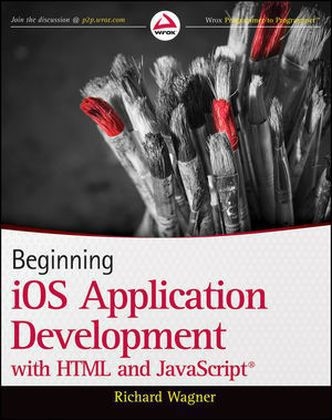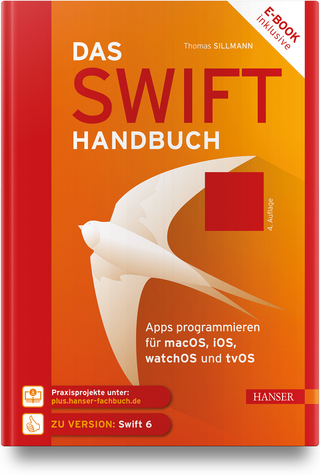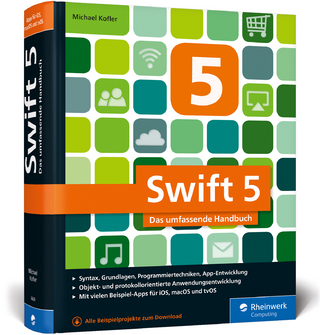
Beginning IOS Application Development with HTML and JavaScript
Wrox Press (Verlag)
978-1-118-15900-2 (ISBN)
- Titel ist leider vergriffen;
keine Neuauflage - Artikel merken
This book is aimed at beginning and intermediate web developers who want to learn how to build new applications for iOS or migrate existing web apps to this platform. In general, you will find it helpful if you have a working knowledge of these technologies: * HTML/XHTML * CSS * JavaScript * Ajax If you are less experienced working with these technologies, the early chapters of the book will help you. Chapter 1 introduces iOS development using web technologies by exploring the Safari web development platform. Chapter 2 focuses on working with core technologies. Chapter 3 explains the Document Object Model. Chapter 4 guides you through writing your first iOS app. Chapter 5 covers how to make an existing website compatible with mobile versions of Safari and how to optimize the site for use as a web application. Chapter 6 gives an overview of the key design concepts and principles that will be used when developing a usable interface on the iPhone and iPod touch. Chapter 7 looks at how to design UI's for the iPad and describes how they differ from the iPhone designs.
Chapter 8 discusses styling with CSS as well as discussing Safari-specific styles that are useful when developing web apps for iOS. Chapter 9 proves a code-level look at developing an iPhone and iPad web application interface. Chapter 10 is about handling touch interactions and events as well as how to capture JavaScript events. Chapter 11 is about special effects and animation based off of the Safari canvas. Chapter 12 discusses how a web application can integrate with core services including Phone, Mail, Google Maps, and GPS. Chapter 13 explains how you can use two little used web technologies (bookmarklets and URLS) to support limited offline support. Chapter 14 dives into the advanced techniques that go along with the mobile version of Safari that supports canvas drawing and painting. Chapter 15 covers how you can use HTML 5 offline to create local web apps that don't need a live server connection. Chapter 16 highlights the major open source iPhone app frameworks and shows you how to be productive with each of them.
Chapter 17 deals with the issue of performance of web-based applications and what techniques you can do to minimize constraints while maximizing bandwidth and app execution performance. Chapter 18 discusses various methods of debugging Safari web applications. Chapter 19 walks you through all of the steps you need to join the Apple Developer Program and obtain necessary credentials for publishing to the App Store. Chapter 20 explores migration strategies and shows you how to take your Web app and wrap it inside of a native iOS shell. Chapter 21 wraps up the book by showing you how to take your app and submit it to the App Store for public distribution. Richard Wagner is the Lead Product Architect of Mobile/Web at Maark, LLC. Before that he was the head of engineering for the Web scripting company Nombas and VP of Product Development for NetObjects where he was the chief architect of a CNET award-winning JavaScript tool named NetObjects ScriptBuilder. Richard is an experienced web designer and developer, as well as the author of several Web-related books on the technologies of the iOS platform.
Richard Wagner is Lead Product Architect of Mobile/Web at Maark, LLC. He is an experienced web designer and developer and the author of several web-related books on the underlying technologies of the iPhone application platform.
INTRODUCTION xxiii PART I: GETTING STARTED CHAPTER 1: INTRODUCING IOS DEVELOPMENT USING WEB TECHNOLOGIES 3 CHAPTER 2: WORKING WITH CORE TECHNOLOGIES 15 CHAPTER 3: THE DOCUMENT OBJECT MODEL 47 CHAPTER 4: WRITING YOUR FIRST HELLO WORLD APPLICATION 65 CHAPTER 5: ENABLING AND OPTIMIZING WEB SITES FOR THE IPHONE AND IPAD 79 PART II: APPLICATION DESIGN CHAPTER 6: DESIGNING THE IPHONE UI 99 CHAPTER 7: DESIGNING FOR IPAD 117 CHAPTER 8: STYLING WITH CSS 135 PART III: APPLICATION DEVELOPMENT CHAPTER 9: PROGRAMMING THE INTERFACE 153 CHAPTER 10: HANDLING TOUCH INTERACTIONS AND EVENTS 189 CHAPTER 11: SPECIAL EFFECTS AND ANIMATION 207 CHAPTER 12: INTEGRATING WITH IOS SERVICES 223 CHAPTER 13: PACKAGING APPS AS BOOKMARKS: BOOKMARKLETS AND DATA URLS 235 PART IV: ADVANCED PROGRAMMING TECHNIQUES CHAPTER 14: PROGRAMMING THE CANVAS 251 CHAPTER 15: OFFLINE APPLICATIONS 269 CHAPTER 16: BUILDING WITH WEB APP FRAMEWORKS 287 CHAPTER 17: BANDWIDTH AND PERFORMANCE OPTIMIZATIONS 303 CHAPTER 18: DEBUG AND DEPLOY 317 PART V: NEXT STEPS: DEVELOPING NATIVE IOS APPLICATIONS WITH HTML AND JAVASCRIPT CHAPTER 19: PREPARING FOR NATIVE IOS DEVELOPMENT 333 CHAPTER 20: PHONEGAP: NATIVE APPS FROM YOUR HTML, CSS, AND JAVASCRIPT 345 CHAPTER 21: SUBMITTING YOUR APP TO THE APP STORE 363 APPENDIX: EXERCISE ANSWERS 375 INDEX 381
| Erscheint lt. Verlag | 1.2.2012 |
|---|---|
| Zusatzinfo | Illustrations |
| Sprache | englisch |
| Maße | 188 x 231 mm |
| Gewicht | 724 g |
| Einbandart | Paperback |
| Themenwelt | Informatik ► Programmiersprachen / -werkzeuge ► Mac / Cocoa Programmierung |
| Informatik ► Software Entwicklung ► Mobile- / App-Entwicklung | |
| Mathematik / Informatik ► Informatik ► Web / Internet | |
| Informatik ► Weitere Themen ► Smartphones / Tablets | |
| ISBN-10 | 1-118-15900-4 / 1118159004 |
| ISBN-13 | 978-1-118-15900-2 / 9781118159002 |
| Zustand | Neuware |
| Informationen gemäß Produktsicherheitsverordnung (GPSR) | |
| Haben Sie eine Frage zum Produkt? |
aus dem Bereich

